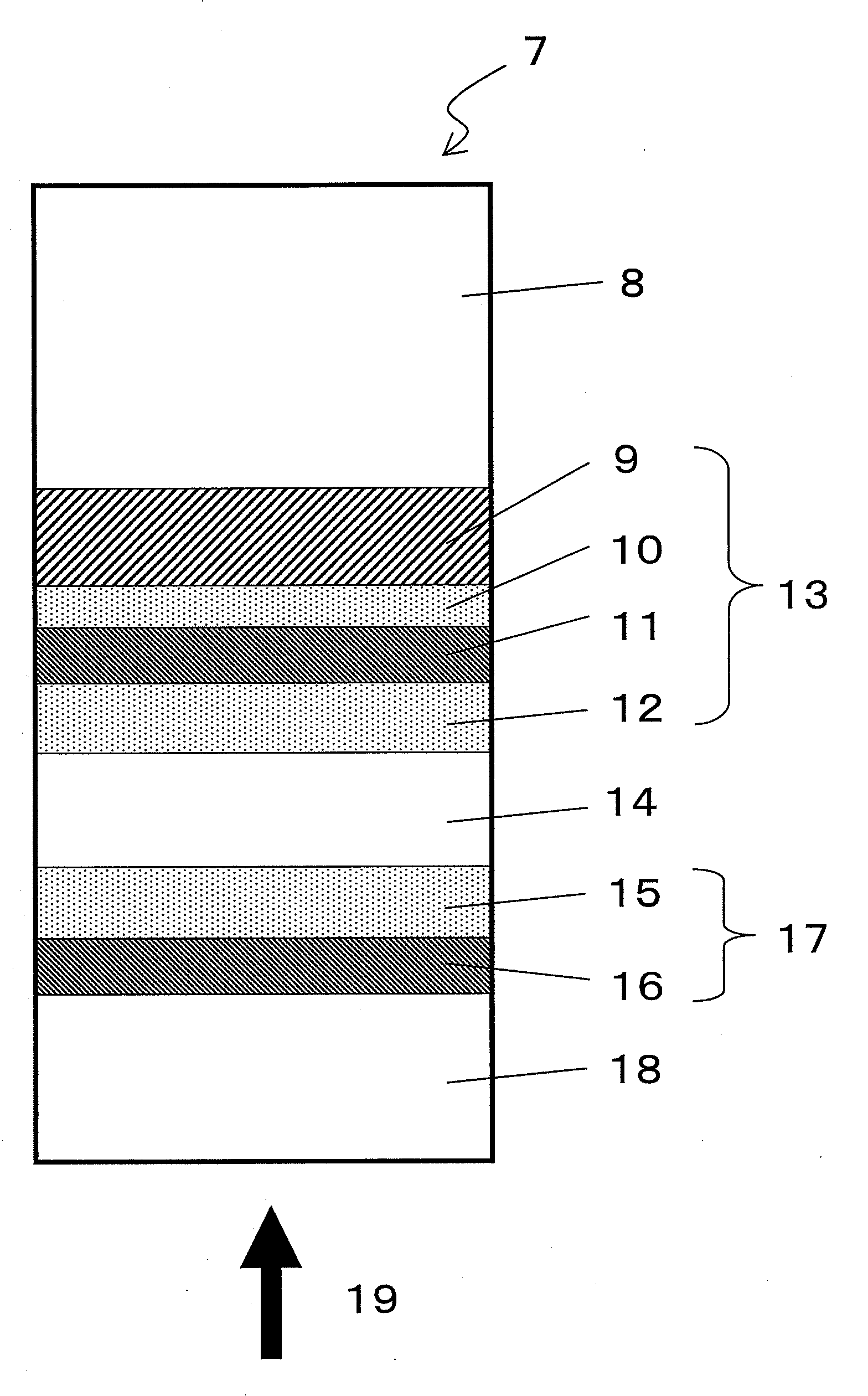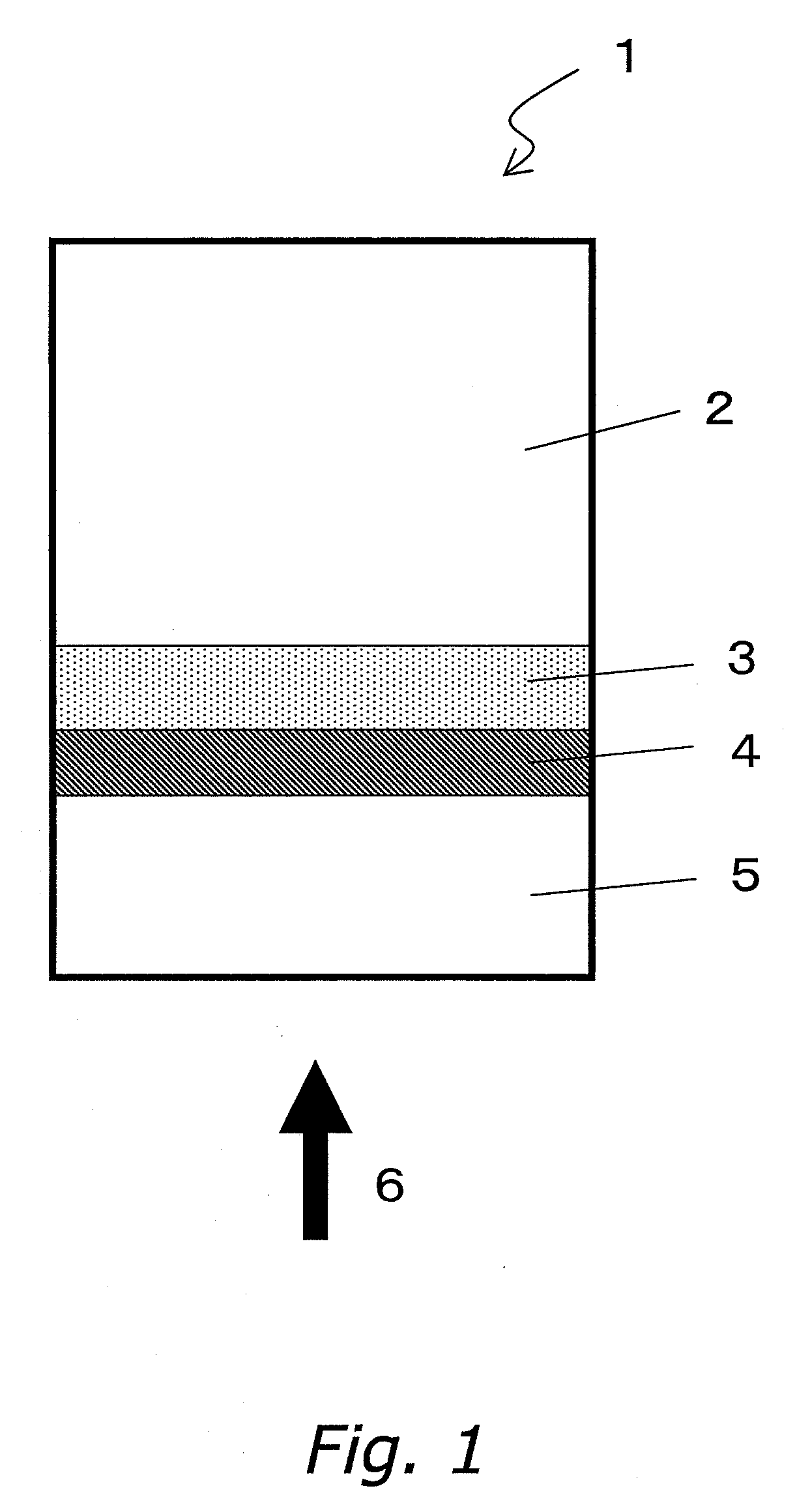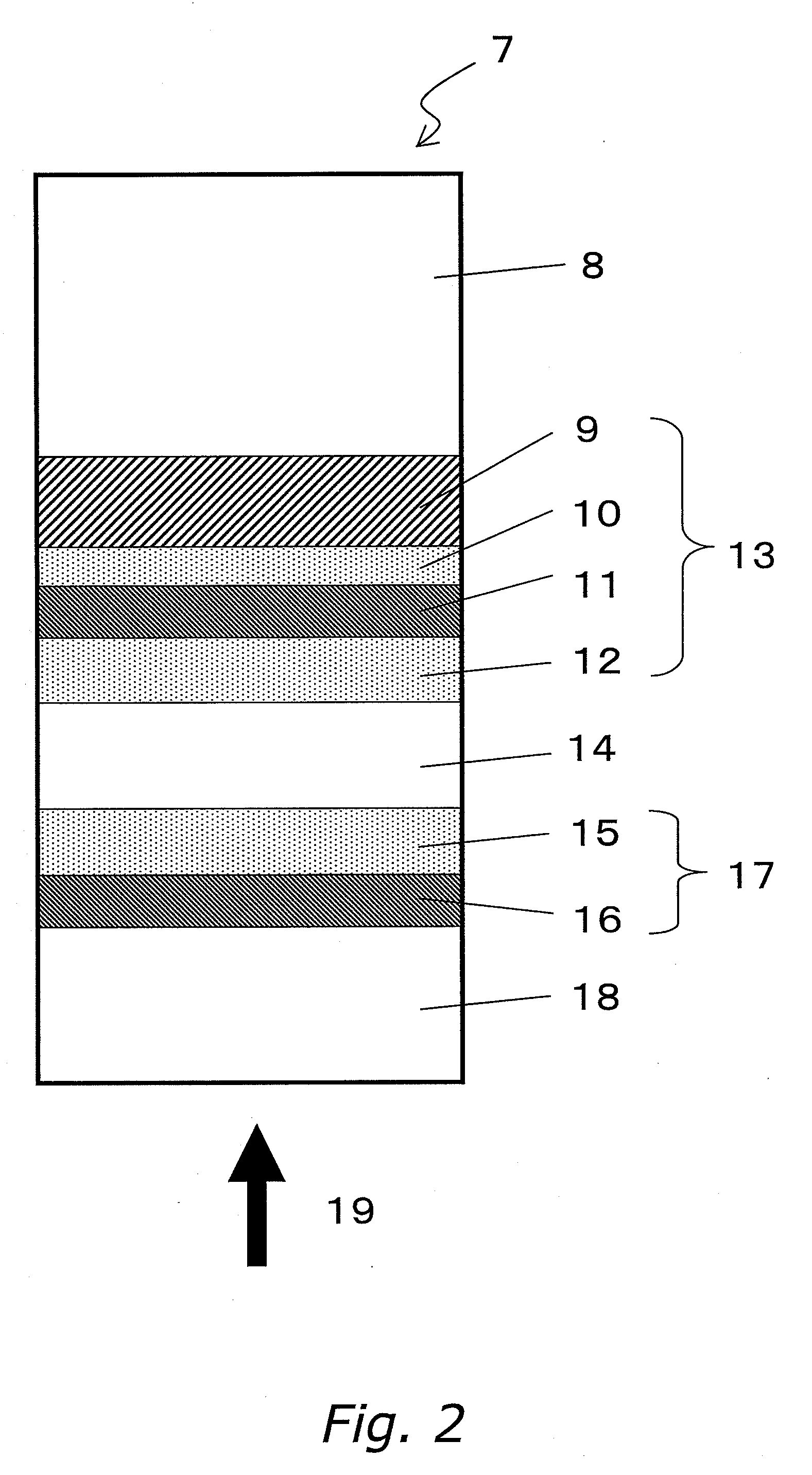Optical information recording medium and method for manufacturing the same
- Summary
- Abstract
- Description
- Claims
- Application Information
AI Technical Summary
Benefits of technology
Problems solved by technology
Method used
Image
Examples
example 1
[0092]An optical information recording medium having the layer structure of FIG. 1 was fabricated, and the manufacture method will be described. Here, a dielectric layer is inserted between a recording layer and a light transparent layer so as to adjust optical characteristics to enable effective light absorption in an information layer.
[0093]A substrate was made of a polycarbonate resin. The substrate had a diameter of 12 cm, a thickness of 1.1 mm, a groove pitch of 0.32 μm, and a groove depth of 20 nm.
[0094]On a surface of the substrate in which a groove is formed, layers constituting a first information layer were formed by sputtering, one on the top of another in the following order. An AlN dielectric layer having a film thickness of 8 nm was formed using an AlN target: a Te—O—Pd recording layer having a film thickness of 6 nm was formed using a Te—O—Pd (atomicity ratio=37:53:10) target; a ZnS dielectric layer having a film thickness of 27 nm was formed using a ZnS target. A lig...
example 2
[0118]An optical information recording medium having the layer structure of FIG. 2 was fabricated, and the manufacture method will be described. Here, three kinds of media were fabricated and compared: (1) a dielectric layer of an information layer on the laser incident side of a two-layer medium was made of AlN having a thermal conductivity of 0.01 W / K·cm or more; (2) the dielectric layer was made of ZnS—SiO2 of 0.01 W / K·cm or less; and (3) a Ag alloy reflection layer and a conventional dielectric layer were used.
[0119]A substrate was made of a polycarbonate resin. The substrate had a diameter of 12 cm, a thickness of 1.1 mm, a groove pitch of 0.32 μm, and a groove depth of 20 nm.
[0120]On a surface of the substrate in which a groove is formed, layers constituting a first information layer were formed by sputtering in the following order: a AgPdCu reflection layer having a film thickness of 40 nm was formed using a AgPdCu (weight ratio=98.1: 0.9:1.0) target; a ZrO2—SiO2—Cr2O3—LaF3 d...
example 3
[0129]An optical information recording medium having the layer structure of FIG. 3 (n=4) was fabricated, and the manufacture method will be described. A substrate was made of a polycarbonate resin. The substrate had a diameter of 12 cm, a thickness of 1.1 mm, a groove pitch of 0.32 μm, and a groove depth of 20 nm.
[0130]On a surface of the substrate in which a groove is formed, layers constituting a first information layer were formed by sputtering in the following order: a AgPdCu reflection layer having a film thickness of 40 nm was formed using a AgPdCu (weight ratio=98.1:0.9:1.0) target; a ZrO2—SiO2—Cr2O3—LaF3 dielectric layer having a film thickness of 20 nm was formed using a ZrO2—SiO2—Cr2O3—LaF3 (molecularity ratio=23:23:31:23) target; a Te—O—Pd recording layer having a film thickness of 20 nm was formed using a Te—O—Pd (atomicity ratio=37:53:10) target; and a ZnS—SiO2 dielectric layer having a film thickness of 30 nm was formed using a ZnS—SiO2 (molecularity ratio=80:20) targe...
PUM
| Property | Measurement | Unit |
|---|---|---|
| Thickness | aaaaa | aaaaa |
| Thickness | aaaaa | aaaaa |
| Thickness | aaaaa | aaaaa |
Abstract
Description
Claims
Application Information
 Login to View More
Login to View More - R&D
- Intellectual Property
- Life Sciences
- Materials
- Tech Scout
- Unparalleled Data Quality
- Higher Quality Content
- 60% Fewer Hallucinations
Browse by: Latest US Patents, China's latest patents, Technical Efficacy Thesaurus, Application Domain, Technology Topic, Popular Technical Reports.
© 2025 PatSnap. All rights reserved.Legal|Privacy policy|Modern Slavery Act Transparency Statement|Sitemap|About US| Contact US: help@patsnap.com



